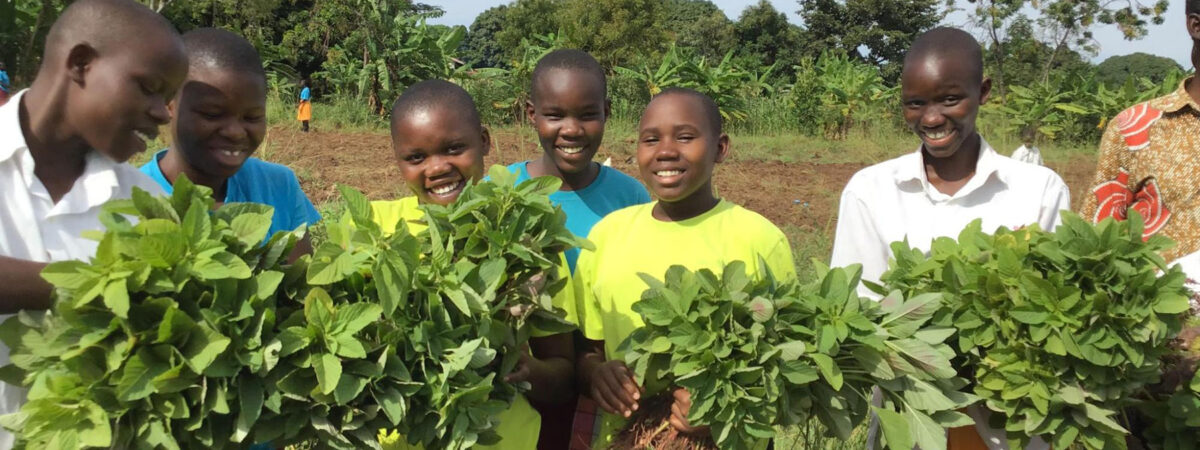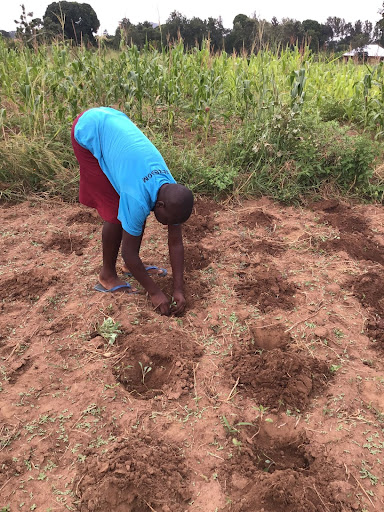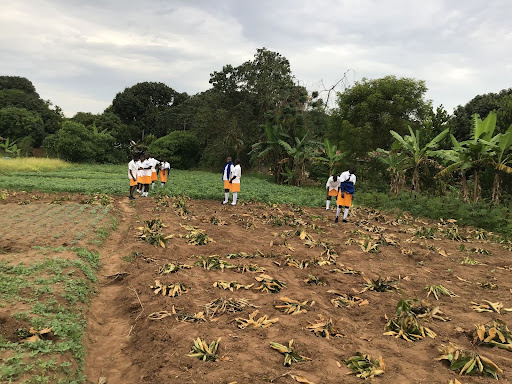
The Ciena Solutions Challenge is a global design challenge by Digital Promise and Ciena that invites middle and high school students to design solutions that address Sustainable Development Goals within their communities. This blog post is part of a series featuring educators whose students’ projects exemplify core elements of the Challenge: creative use of technology, social purpose, student agency and leadership, and sustainability and scaling. Below are lessons on “Creative Use of Technology” from educator Grace Musingo who facilitated the Ngora Vegetable Growers project with student teams at Ngora Girls Secondary School in Soroti City, Uganda.
In today’s fast-paced world, ensuring a balanced diet for students is paramount. However, many schools face challenges in providing nutritious meals, especially when it comes to incorporating essential vegetables that provide sufficient micronutrients for adolescents. Our school, Ngora Secondary School, was no exception. As part of the Ciena Solutions Challenge, we identified the issue of unbalanced diets, particularly the lack of dark green and fruit vegetables, which causes hidden hunger. Hidden hunger is a form of undernutrition that occurs when the intake and absorption of vitamins and minerals such as zinc, iodine, vitamin A and iron are too low compared to energy dense food to support a person’s full development. Schools face a major challenge in ensuring consistent inclusion of vegetables in school diets due to limited financial resources. Recognizing the significance of this challenge, we aimed to find innovative ways to overcome it.
Our students quickly realized that technology could be a game changer in our pursuit of improving nutrition at the school. They immersed themselves in online research about hidden hunger and realized that their own regular diet was not giving them the necessary nutrients for proper growth. From there, students began exploring online resources and do-it-yourself (DIY) guides to gain insights into sustainable gardening practices and innovative farming techniques. They scoured websites, watched YouTube tutorials, and gathered knowledge on practical techniques for cultivating vegetable gardens at our school.
With limited access to advanced gardening equipment, our students embraced the DIY culture of gardening to create gardens for planting various vegetables like kale, eggplants, onions, peas, and amaranths, along with various fruits , like paw paw, passion fruit, mangoes, jackfruit, and oranges.

Students transplanting kale in the garden.
Students visit the gardens everyday and have seen their own diets improving as they start to harvest vegetables from it.

Students checking on crops in the garden.
“I want to eat more food whenever they serve food with greens.” – Student
Our students recognize the value of sharing their knowledge and experiences with their peers and have been documenting their gardening journey through images, videos, and testimonials in order to provide guidance to others. By sharing their successes, challenges, and lessons learned, students are encouraging their peers to embark on their own vegetable gardening projects. This culture of knowledge-sharing fosters collective learning, ensuring that even students with limited access to technology can benefit from the experiences of others. As we continue to grow the project, we hope to capture what we’re learning and use social media tools to share our experiences of fighting hidden hunger with vegetable growing with other schools and communities locally and globally.
Our journey in creatively using technology to address the lack of vegetables in school diets and prevalence of nutritional deficiencies among adolescents has taught us valuable lessons. We advise educators to expose their students to diverse ideas and experiences beyond their classroom and immediate context. By nurturing curiosity, creativity, and a sense of social responsibility, educators can empower students to make a greater impact on society. Technology becomes a powerful tool to bridge gaps, harness resources, and instill confidence in exploring innovative ideas.

Educator Nabuduwa Grace Olive Musingo (left) with students at Aisa radio station.
Last year, my students had the opportunity to present on a radio talk show on climate change and were amazed by its impact when they heard how many people were calling in to appreciate their knowledge. One student commented, “I have never ever thought that I could be a presenter at a radio station and never knew of the technology needed to transmit a radio program.” We hope to share the story of our vegetable garden on the local radio station as well so that other schools and community members can learn about hidden hunger and our experience addressing it at our school.
The story of our school’s transformation in addressing the challenge of a lack of vegetables in our diet showcases the power of creativity, determination, and strategic use of technology. As the journey continues, we are excited to witness the continued growth and positive impact of our vegetable gardens on the overall well-being of our school community. Through collective effort, we are nurturing healthier, more vibrant futures for our students and empowering them to become catalysts for change.